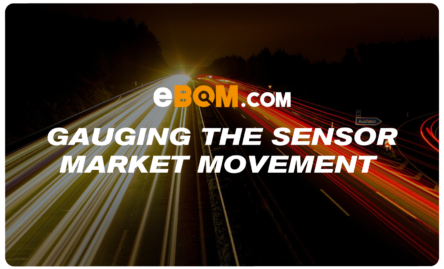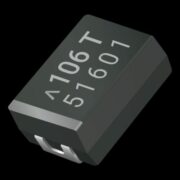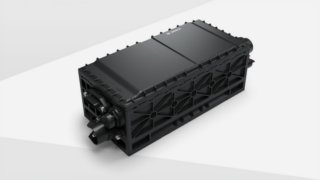It was published in a recent study by Global Market Insights, the global sensor market is predicted to be worth over $3.5bn by 2026, only six years from now. This is due to the ongoing rise in factory automation trends and the use of industrial robots. Especially now as many factory labourers can no longer work in proximity with each other due to COVID19, the idea of shipping in industrial robotics to replace factory workers may seem appealing. It was stated by BBC that up to 20 million manufacturing jobs around the world could be replaced by robots by 2030 which results in further growth for the sensor market. The many sensors inside robotics cover a range of duties to ensure the device is at a stable condition and aware of its environment, these sensor duties include battery management, physical orientation, temperature, motor drives and converters. In correspondence to this, as technology increases in demand, so does the demand for sensors.
Medial Sensor Marketing Taking Off
With COVID19 circulating the globe, the demand for medical applications has really taken off. Stated by Market Watch, medical Sensors refers to sensors in medical environments that detect chemical, physical, and biological signals. There are several applications of medical sensors in medicine such as for monitoring, imaging devices, fitness and wellness, diagnostics, and therapeutics which make medical devices more effective and safer, while simplifying their operation. Successful applications of sensors in medical technology include vacuum suction pumps, blood sugar measuring devices, dialysis machines and sleep diagnostic devices. According to Intrado Global Newswire, the global medical supplies market size is projected to reach USD 100 billion by 2021 from USD 78 Billion in 2019, at a CAGR of ~13.4% which is primarily from the increasing demand for medical applications during the virus outbreak in late 2019.
Medical devices are a growing trend within the fitness and health industry. The successful development of wearable technology is from the increasing demand of customers taking charge of their own health and purchasing the sensor-based devices. Stated from Pharmiweb, in 2018, according to Tax Policy Center, the federal government invested approximately USD 1.1 trillion in the healthcare sector in the US. While the wearable electronics market is thriving, so is the sensor market as they play an important role in the function of the product. According toresearch, in 2019 over 80% of consumers were willing to wear fitness technique. While fitbit products had about 27.63 million active users in 2018 while it increases upto 29.57 million in 2019.
IoT Sensor Market on a Steady Rise
The future of the IoT sensor market looks promising with limitless opportunities in the home automation, aerospace and defense, industrial, and healthcare industries. You have probably heard of the Amazon Echo, Google Nest and Fit Bits which are all sensor based. Customers can connect contact and motion sensors to Alexa in two ways: either through a smart home skill that uses the new Contact and Motion Sensor APIs, or with a compatible Zigbee sensor paired directly to Echo Plus or a compatible smart home hub, a quote supplied by developer amazon. All IoT based electronics such as Amazon Echos obtain sensors such as motion and sound sensors. The motion sensor on the Echo is constantly scanning the room to detect movement, so walking by is the visual equivalent of a wake word. The artificial intelligent personal assistant using the sensors to connect with whom is in the room. The major drivers for this market are development of intelligence and low-cost sensors, growing demand for smart devices and wearables, need for real-time computing in IoT applications, and increasing internet penetration in emerging nations, as quoted from Yahoo.
Pressure Sensor Market Growing
According to new market research from MarketsandMarkets™, the Pressure Sensor Market is expected to grow from USD 13.6 billion in 2020 to USD 20.8 billion by 2025; it is expected to grow at a CAGR of 8.9% during 2020–2025. Key factors fuelling the growth of this sensor market include advancements in microelectromechanical (MEMS) sensors, increase in demand from automotive and medical industries, and stringent passenger safety regulations. In the mist of COVID19, the medial industry is beaming which has highly contributed to this pressure sensor market rise. Increasing use of pressure sensors in smartphones is also expected to support in growth of pressure sensor market.
Automotive Sensor Market Booming
You probably already know that all cars manufactured within the last five years will be packed with sensors. There are dozens of sensors per car, working alone or in groups, now providing functions as simple as detecting an open door to as complex as identifying a pedestrian at night and activating automatic emergency braking. Many global cars manufacture such as Mercedes-Benz, Bosch, Nissan, Audi, and Toyota have been developing autonomous vehicles which are packed with many sensors to travel safely. The prospect of self-driving cars is opening up sensor business opportunities for suppliers, such as long-range lidar that creates complex, 3D “point clouds” to accurately measure distances, or in-car biometric monitoring to adjust the temperature of each seat.
“If you start looking into the car where the sensors are hidden it’s amazing, really, the number of applications is going through the roof,” said Frank Findeis, vice president for automotive sensors at the German semiconductor maker Infineon, which along with Robert Bosch is one of the top two suppliers for the automotive semiconductors. “If you go into an entry-class car, you probably end up with 20 to 50 sensors that use semiconductors,” Findeis said. “If you go to a high-end car you easily end up with 100.”
By Amy Leary, Marketing Manager at eBOM.com










